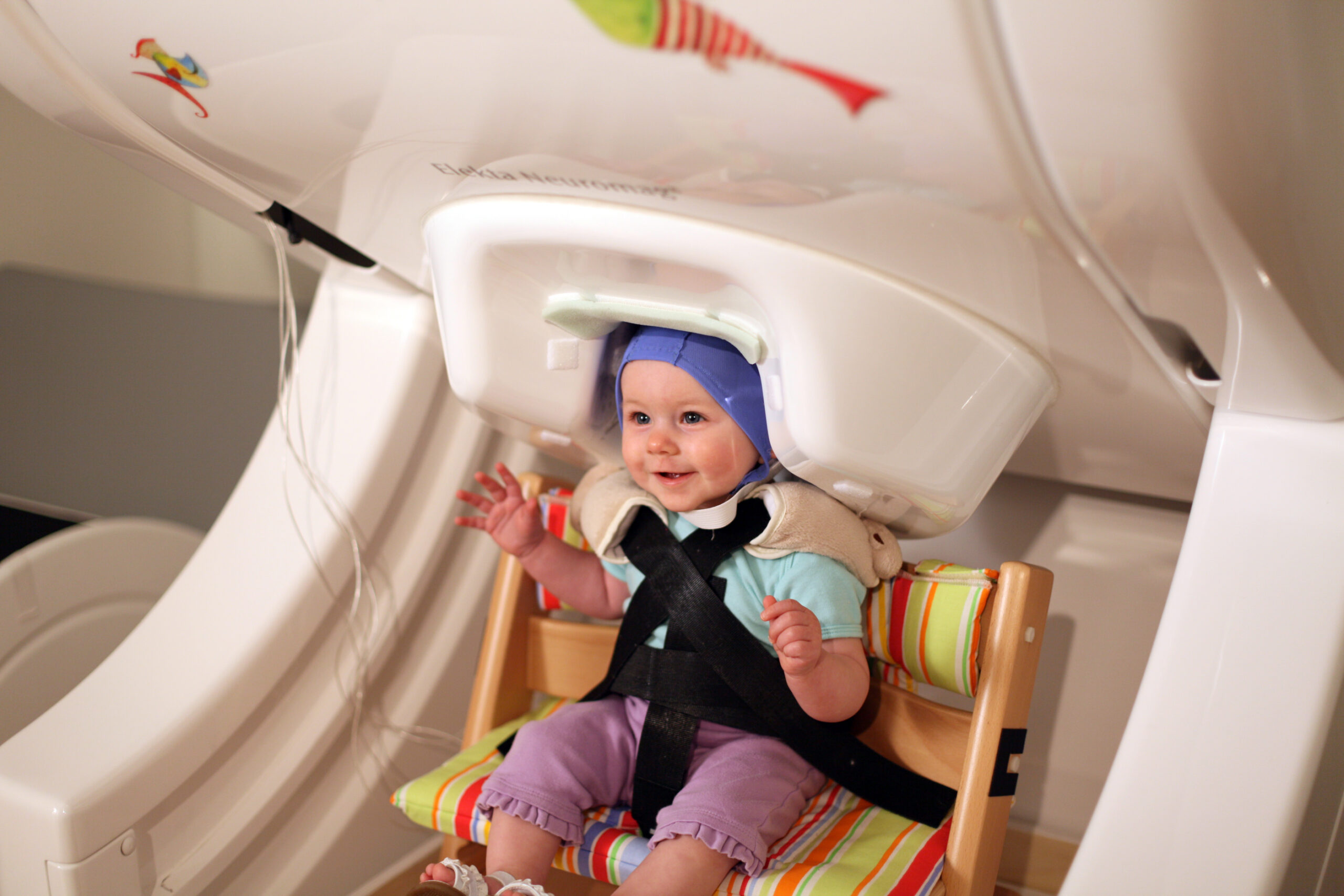We’ve all heard of the stereotypically proud mom bragging about, “My son the doctor.” It’s not too often, however, that you hear a mother say, “My son the brilliant statistician and linguist.” Dr. Patricia Kuhl thinks you totally could (and should), that is until that son turns one.
Dr. Kuhl studies how babies learn language. She has great headway in that regard at the University of Washington’s Institute for Learning and Brain Sciences, also known as I-Labs. Lucky for Dr. Kuhl, the lab in Seattle is equipped with a really nifty toy, a large noninvasive device that can scan a baby’s brain. The device, according to the good doctor, looks something like a “hairdryer from Mars.” That “toy” is known as a magnetoencephalography brain-scanner, affectionately called “MEG” for short.
Various types of scanners have been enlisted over the past 25 years to show scientists what happens in the brain as people watch films, read, and listen to conversation. Unfortunately, these scans weren’t very effective in helping scientists understand what happens inside a baby’s brain. That’s because these machines required subjects to lie perfectly still, in narrow spaces, at length. MEG is different because the baby has complete freedom of movement inside the scanner which has a built-in infant seat.
The baby wears a cap with an embedded GPS device. The scanner can pick up activity in the outermost layers of the baby’s brain. Bet that sounds dangerous to you. But it’s not—there’s no radiation. MEG relies on the use of magnetic fields and is deemed to be completely safe for babies.
Statistician and Linguist–Until They Turn One
So what is it exactly that Kuhl and her team of researchers hope to learn by scanning baby brains with expensive equipment? For Dr. Kuhl, it’s about learning how babies learn language. This is just one small aspect of a new and fascinating field, the science of learning. The science of learning follows a multidisciplinary course that includes developmental psychology, neuroscience, education, and technology. In her work, Kuhl has learned something new and kind of miraculous. A baby serves as a mini statistician and linguist, gathering data on language as they observe and listen to people speak.
There is one caveat: the baby can’t perform the magical feat without access to a live human being. Listening to a recording doesn’t yield the same results. Watching a film or a television show won’t produce the miracle. Only when a baby can be with people up close and personal, can they do this crazy genius stunt. That’s because babies are inherently social emotional beings. Watching and listening isn’t enough. They need human interaction in order to learn. Without the personal touch, the baby is just not going to run the data through his or her internal computer.
The really crazy thing, however, is that adults don’t have the same facility. Babies, in fact, lose this incredible facility for learning languages before they turn one year old. That’s why all mothers, everywhere, might truthfully speak of, “My son the brilliant statistician and linguist,” only until the child’s first birthday party.

The Social Brain
Kuhl thinks that based on what she has observed about the way babies learn languages, that it is what she calls the “social brain” that may be the gateway to learning. It is Kuhl’s hope that in gathering data on the social factors implicit in the process of language development we can find better educational methods and improve classroom environments to make them more conducive to learning. Most important right now is to find a way to bridge the gap in literacy between students from low-income families and their wealthier peers.
Meantime, researchers at I-LABS have all sorts of ideas in how MEG might be used to better understand the brain. They’d like to look at how babies are able to mimic facial expressions and sounds. They’d like to study children with autism.
The imaging center cost the U. of Washington $7 million dollars. That’s a lot of money to spend on equipment. But Dr. Kuhl and her team have already learned a great deal and what they have learned is so important that a value cannot be placed upon it: babies need socialization to learn. The human touch cannot be replaced by a sound or moving picture. The human touch is indispensable and incalculably precious.
